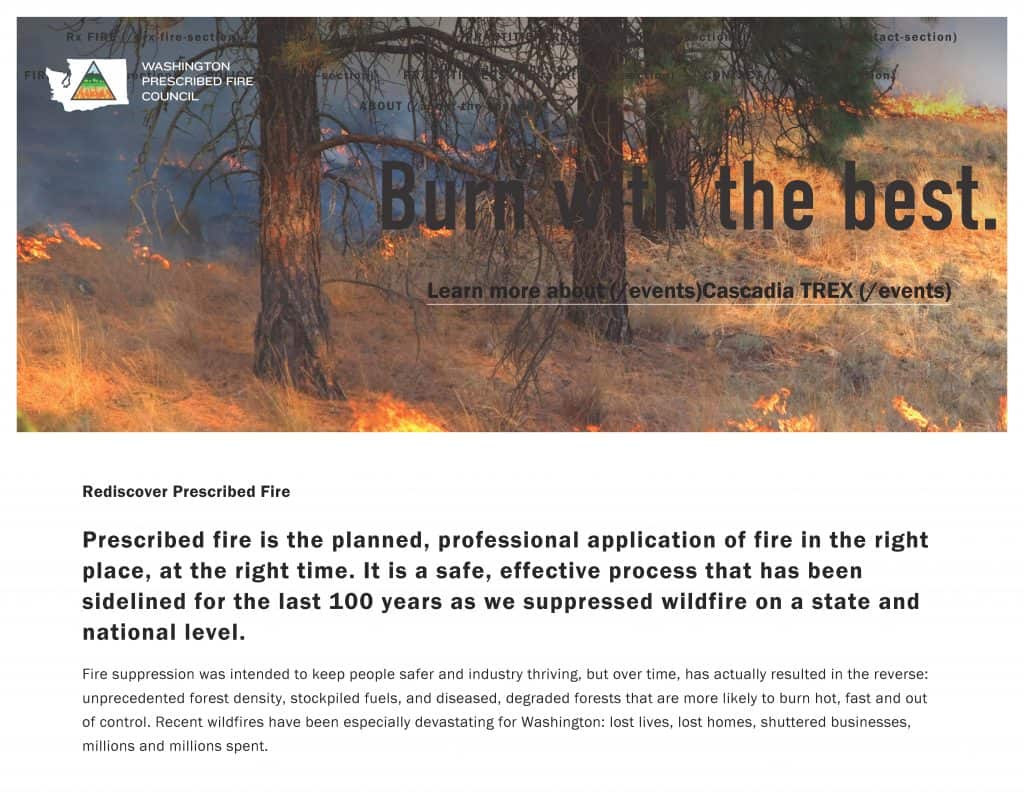There are different reasons that different groups of people, including scientists, want more fire on the landscape. Fuels specialists want to reduce fuels and make problem fires safer to fight. Ecologists want to have various good ecological kinds of things happen. At the same time, there are bad things that fires can do, to people, watersheds, soils, animals, infrastructure and communities, that people want to avoid. At the fireshed level, these things can be discussed and worked out by the relevant experts, but many folks agree that getting more fire on the land can be good.
To get more fire on the landscape we only have a few choices…let’s use fire folks’ terminology (as much as we can, some NWCG definitions are apparently under review). These folks are the experts, so let’s use their terminology.
Prescribed Fire
Any fire intentionally ignited by management actions in accordance with applicable laws, policies, and regulations to meet specific objectives
Then we have what we used to (still?) call
Wildland Fire Use (definition from 2009 here.) Wildland fire use (WFU) is the management of naturally ignited wildland fires (those started by lightning or lava) to accomplish specific resource objectives within a pre-defined area. Objectives can include maintenance of healthy forests, rangelands, and wetlands, and support of ecosystem diversity.
Wildfire
An unplanned, unwanted wildland fire including unauthorized human-caused fires, escaped wildland fire use events, escaped prescribed fire projects, and all other wildland fires where the objective is to put the fire out (definition currently under review).
Now, if folks generally agree that more fire on the landscape is a good thing, then we get to choose between WFU and PB. As Rebecca Watson pointed out in a comment on a previous post, PB could have some advantages over WFU in terms of air quality. In terms of suppression, it might be better to have PB to free crews during the summer where they are needed to deal with wildfires. Except, that the fire that becomes a WFU would have to be otherwise suppressed. It seems like PBs can be better planned and more controllable (because of being during the off-season and the fuel and weather conditions then) so you might be able to meet your objectives easier. It seems like you would want to do both. Anyone who has seen any studies on this, please post! I did find this paper on barriers to WFU in Wildfire Today (2008)that looks interesting.
I asked Dr. Mark Finney “who is doing a good job on returning fire to the landscape in the west?” and he pointed to the Washington Prescribed Fire Council. Here’s some info and here’s a link:
Rediscover Prescribed Fire
Prescribed fire is the planned, professional application of fire in the right place, at the right time. It is a safe, effective process that has been sidelined for the last 100 years as we suppressed wildfire on a state and national level.
Fire suppression was intended to keep people safer and industry thriving, but over time, has actually resulted in the reverse: unprecedented forest density, stockpiled fuels, and diseased, degraded forests that are more likely to burn hot, fast and out of control. Recent wildfires have been especially devastating for Washington: lost lives, lost homes, shuttered businesses, millions and millions spent.There has to be a better way, and there is. It’s time to embrace prescribed fire.
With recent record-breaking years of megafire, and devastated communities across the state, it’s not surprising that fire is on lawmakers’ minds. In the 2016 legislative session, lawmakers explored tools for creating more fire-resilient forests, including the passage of House Bill 2928, the Forest Resiliency Burning Pilot project. The bill provides funding for prescribed fire on at-risk forests, as well as an exploration of current barriers to expanding the role of controlled fire in creating and maintaining fire-resilient forests.
We’re proud to say the Washington Prescribed Fire Council and our partner organizations are at the heart of this landmark effort to expand the use of prescribed fire, reduce megafire risk to communities and restore Washington’s forests and streams.
Check out their website and pilots!

More prescribed fire on the landscape would be advantages, but in order to make this work on a meaningful scale there needs to be more smoke clearance for days that fuels are in prescription. Annually there is a backlog of planned burns; piles, harvest units, and underburns where initial fuels treatment has been done. There is only a one to two year window on most of these planned burns before greenup and new growth make it impractical. The higher risk areas are critical to have fuels and weather in prescription to minimize escapement and meet the goals, and these are the ones that are usually backlogged.
The challenge is to get public license to have smoke intrusion for one to three days at a time in order to accomplish the PB. So far that has been a losing proposition. Maybe having a special election, with a referendum to allow intrusion from PB, in August when everyone is smoked in from wildfires might work?
Sharon
Well put!